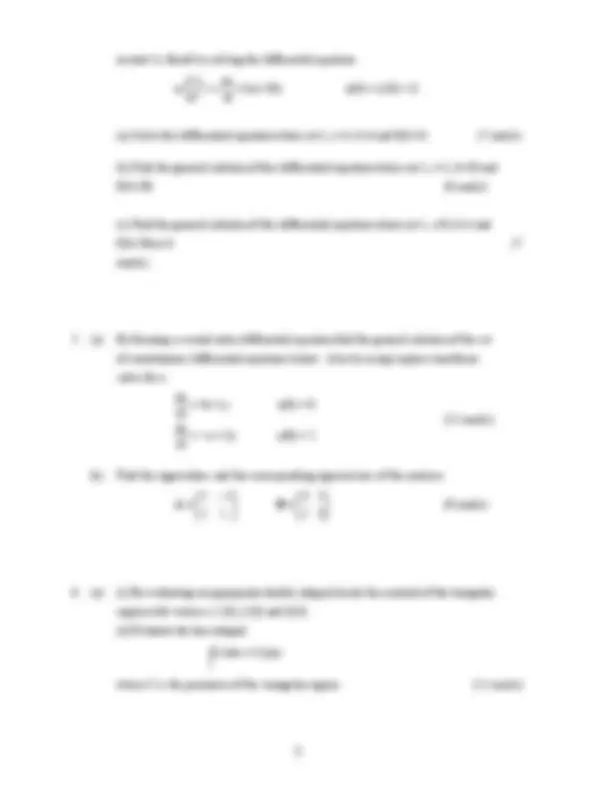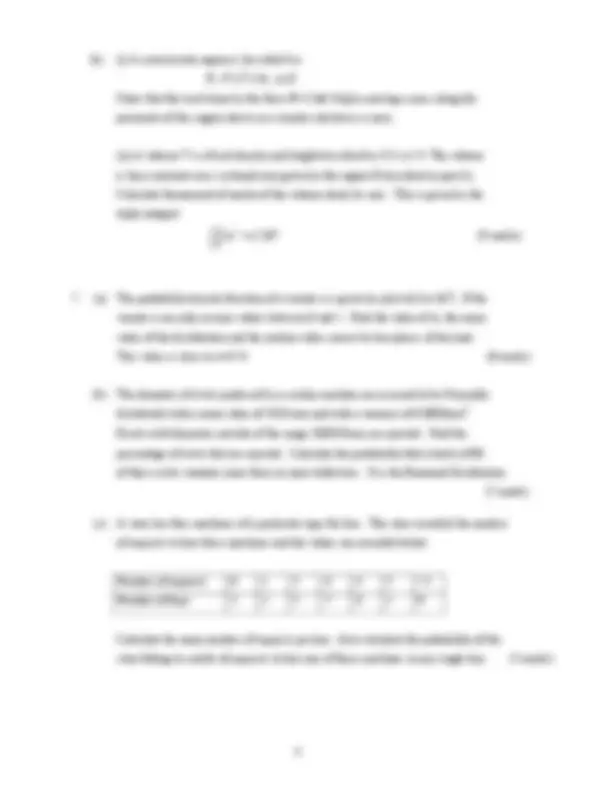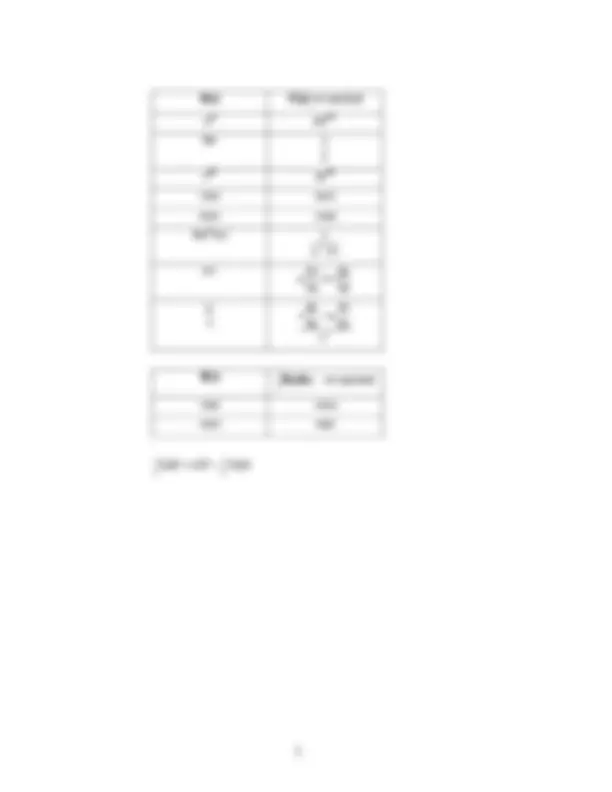





Study with the several resources on Docsity

Earn points by helping other students or get them with a premium plan


Prepare for your exams
Study with the several resources on Docsity

Earn points to download
Earn points by helping other students or get them with a premium plan
Community
Ask the community for help and clear up your study doubts
Discover the best universities in your country according to Docsity users
Free resources
Download our free guides on studying techniques, anxiety management strategies, and thesis advice from Docsity tutors
Main points of this past exam are: Improved Euler Method, Electrical Circuit, Current, Instant, Differential, Equation, Differential Equation, Steady State Current, Single Periodic, Maximum
Typology: Exams
1 / 6

This page cannot be seen from the preview
Don't miss anything!




Answer FIVE questions. All questions carry equal marks.
Examiners: Mr.J.E.Hegarthy Prof.J.Monaghan Mr. T O Leary
dtdi^ +2i=40sin2t i(0)=0. Solve this differential equation. Express the steady state current as a single periodic function of the form Rsin(2t-α). Write down the maximum and minimum values of this function and find the smallest positive values of t for which these extreme values hold. Note:sin(A-B)=sinAcosB-cosAsinB (8 marks)
(b) By separating the variables or by using an integrating factor solve the differential equation
dxdy^ +^ 4xy=12x y(0)=^1. Estimate the value of y at x=0.1 by using the Three Term Taylor method or by using the Improved Euler Method with a step of 0.1. (8 marks)
(c) Show that the expression (6x 2 -5y)dx+(4y-5x)dy is the total derivative of a function. Find this function and hence solve the exact differential equation (6x 2 -5y)dx+(4y-5x)dy=0 y(1)=2 (4 marks)
f(x,y)= (^)
2y arctan 3x
about the values x=1,y=2. The series is to contain terms deduced from second order partial derivatives. (7 marks)
(b) Find the maximum value of the function V=48-2x 2 -2y^2 -z 2 where x+y+z=8. Eliminate one of the variables and use a Lagrangian Multiplier. (9 marks)
(c) By using partial differentiation estimate the value of v= 4x 2 − 9 y^2. where the values of x and y were estimated to be 5 and 2 with maximum errors of 0.02 and 0.04, respectively. (4 marks)
s 8s 19s 12
(^3) + 2 + + (6 marks)
(b) By using Laplace Transforms solve the differential equations (i) ddt^ x 2 4 dxdt 3x 12et x(0) x(0) 0
2
(ii) ddt^ x 2 4x 12 x(0) x(0) 0
2
(c) Find the poles of the transfer function (^) L[f(t)]L[y] where
(b) (i) A semicircular region is described by
Show that the work done by the force F =12x i +24y j in moving a mass along the perimeter of this region above in a counter-clockwise is zero.
(ii) A volume V is of unit density and height described by 0 ≤ z≤3.The volume is hasa constant cross sectional area given by the region R described in part (i). Calculate themoment of inertia of the volume about its axis. This is given by the triple integral
(b) The diameter of rivets produced by a certain machine are assumed to be Normally distributed with a mean value of 20.01mm and with a variance of 0.0003mm^2. Rivets with diameters outside of the range 20±0.05mm are rejected. Find the percentage of rivets that are rejected. Calculate the probability that a batch of 80 of these rivets contains more three or more defectives. Use the Binomial Distribution. (7 marks)
(c) A store has four machines of a particular type for hire. The store recorded the number of requests to hire these machines and the values are recorded below:
Number of requests 0 1 2 3 4 5 > Number of days 2 2 5 7 3 1 0
Calculate the mean number of requests per day. Also calculate the probability of the store failing to satisfy all requests to hire one of these machines in any single day. (5 marks)
f(x) f ′ (x) a=constant x n^ nxn- lnx x
e ax^ ae ax sinx cosx cosx -sinx tan-1^ (x) x 1
uv dx vdu dx u dv+
v
u
v^2 dx
udv dx v du−
sinx -cosx cosx sinx